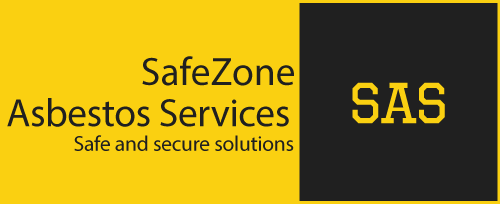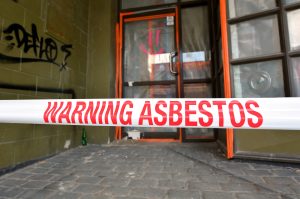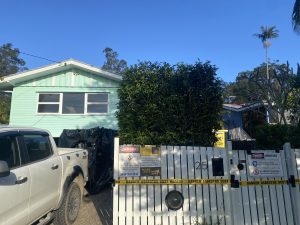Fixing up an old house is a fun and rewarding project. But before you embark on a DIY adventure, make sure you understand the dangers of asbestos in your home.
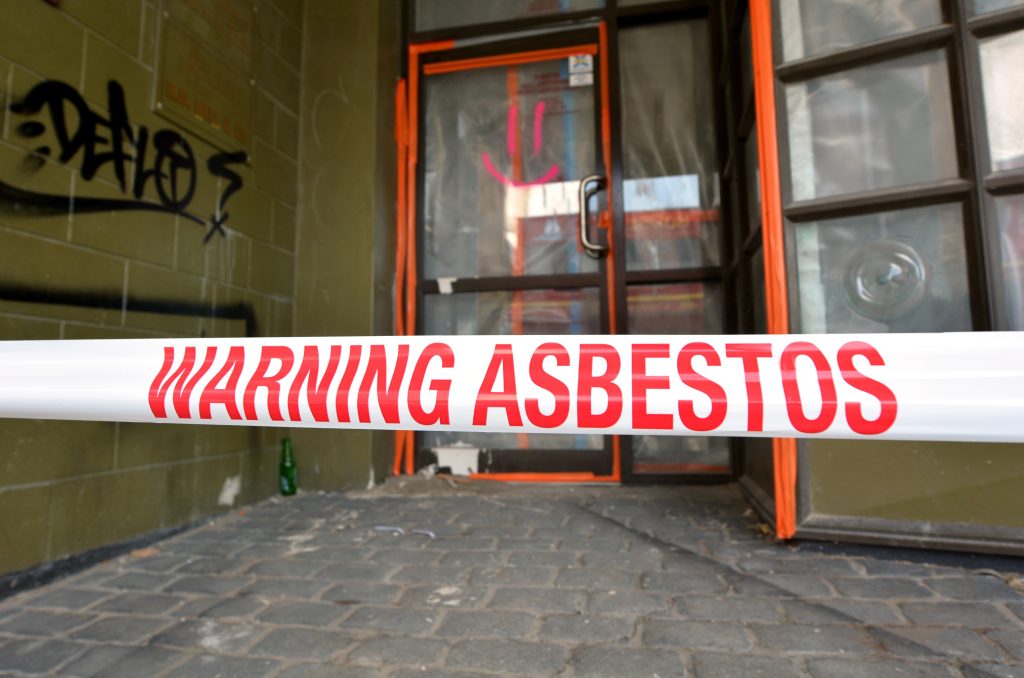
Don’t DIY Before You Get an Asbestos Check!
More and more people are delving into the world of DIY. The TV show The Block has helped everyday Aussies realise that they can tackle home renovation projects. We’ve watched as contestants update run-down old properties and transform them into stunning, contemporary homes.
If you are considering your own reno project, before you begin your foray into the world of DIY, it’s essential to understand the dangers of asbestos in your home.
Asbestos is commonly found in ceilings, floors, and insulation of older Brisbane homes. Disturbing asbestos-based materials without proper inspection and treatment can release harmful fibres, so you should always check for asbestos before you get stuck into renovations.
Where is Asbestos in My House?
Asbestos was commonly used in Brisbane homes built prior to the 1980s. Asbestos in older homes has been used as a foundational building material and in building repairs and upgrades.
Asbestos is frequently found in ceilings, with many older ceilings using asbestos cement sheets. Ceilings with textured or popcorn finishes are common culprits, as are garage and shed roofing sheets. Asbestos can also be found in soffits, gutters, downpipes, partition boards, and even corrugated fencing.
Vinyl flooring materials can contain asbestos and we have frequently found asbestos on the lining behind tiles in laundries, kitchens and bathrooms. Asbestos might be found in wall panels and shingles used for siding. Wall coatings should also be checked for asbestos.
We’ve even discovered asbestos around older heating systems and boilers, where it has been used as an insulation material to assist with heat retention. It’s not just indoors where you will find dangers of asbestos in your home. Garages, carports and those popular Brisbane bungalows should all be checked.
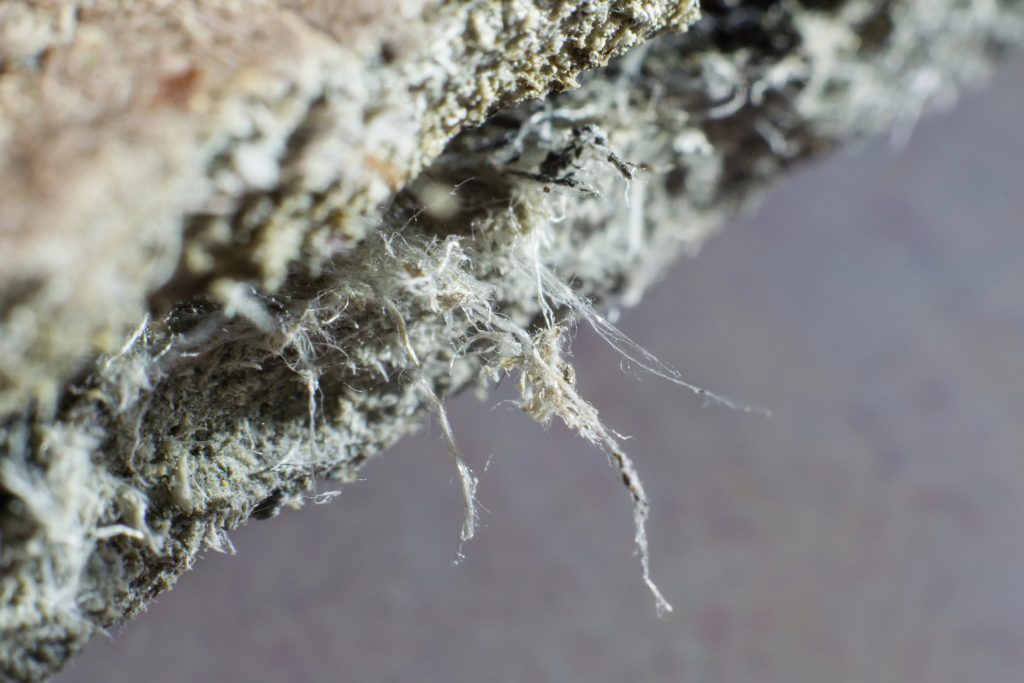
Rules for Asbestos in Older Homes
Not only is the removal of asbestos risky for homeowners who want to try a DIY approach, there are also implications for the wider community. In Queensland, there are asbestos testing regulations in place, and rules regarding asbestos removal and disposal.
Proper asbestos removal is regulated by legislation that protects homeowners and the wider community. You can read more about Asbestos Removal Regulations in Brisbane: What Homeowners Need to Know.
When you are dealing with asbestos at home, it’s also important to understand the different types of asbestos you might encounter. Homeowners are allowed to handle bonded or non-friable asbestos, which is more stable and less prone to releasing fibres into the air. It is usually found in materials that are bonded with other substances, which makes it less hazardous unless it is disturbed. Bonded asbestos is often found in cement products, vinyl floor tiles and roofing felt.
Non-bonded or friable asbestos refers to materials that are easily broken down or crushed into powder. This type of asbestos worsens the dangers of asbestos in your home, because it presents a greater risk. Non-bonded asbestos can release dangerous fibres into the air, which can be harmful when inhaled. Common examples of friable asbestos include sprayed insulation, pipe insulation and soundproofing materials.
Risk of DIY Home Renovations
Exposure to asbestos from building materials is most likely to happen during renovations or demolitions when asbestos-containing materials are disturbed, removed or cut. Asbestos leaking can happen easily and quickly – such as through an asbestos tile crack.
When disturbed, these materials can release harmful asbestos fibres into the air. The dangers of asbestos in your home pose serious health risks including lung diseases, asbestosis and other cancers. Though these conditions are rare, their consequences can be fatal. So, how much asbestos exposure is dangerous? There is no known safe level of exposure to dry, crumbling asbestos.
DIY disasters reported on building sites include bins and bags stuffed with asbestos-based insulation and piles of asbestos-ridden materials left within demolition debris. These scenarios are not just messy, but also potentially dangerous. It’s crucial to be cautious and aware of the risks involved in damaged asbestos removal.
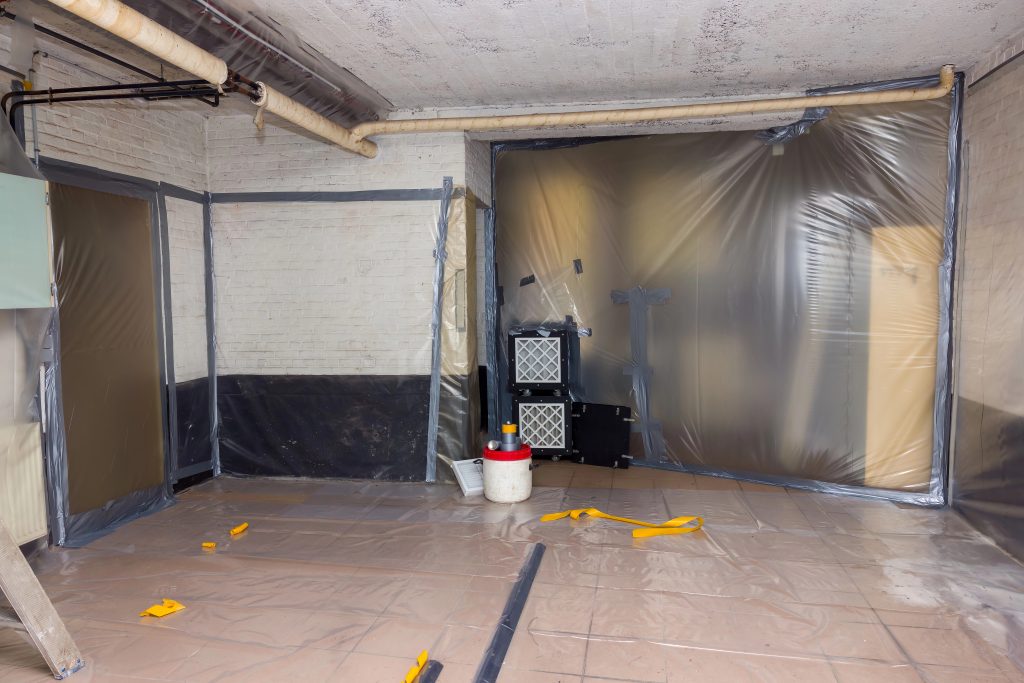
What to do Before You Start Renovations
If there is any chance at all that your home contains asbestos, it’s important to get potential materials tested. An untrained homeowner can’t determine if a material is asbestos-free and a visual assessment alone will not suffice.
If you’re planning a renovation in a home constructed before 1990, it’s essential to include the cost of an accredited asbestos inspection report and potential removal in your budget. The only reliable way to determine whether asbestos is present is to conduct tests on suspicious looking materials. If asbestos is found, it must be removed by licensed professionals, like SafeZone, before you carry out any renovations. This process will give you the peace of mind that your home is safe and compliant with regulations.
The dangers of asbestos in your home are real. Asbestos testing before renovation is not just a precaution; it’s a necessity to ensure you safe and compliant. Professional testing is the only reliable way to confirm the presence of asbestos in your home, and it’s a crucial first step before you get stuck into you renovation project.
Benefits of Asbestos Testing and Removal Services
DIY projects should bring you satisfaction and enjoyment, not danger. By taking a proactive approach to asbestos identification and safe removal, you can safeguard your health and ensure that your project is both secure and compliant with regulations. Professional asbestos services and testing and removal services provide peace of mind and ensure the safety of your home, your family and your neighbours.
Contact SafeZone Asbestos Services before you start your renovations. With over a decade of hands-on experience dealing with asbestos in older homes, we know what to look for and will thoroughly check those risk areas. We ensure every job is completed with care, efficiency and strict compliance with Queensland asbestos testing regulations while addressing the dangers of asbestos in your home.
Don’t risk your own health, or finding yourself on the wrong side of the law. Book safe and secure asbestos testing and residential asbestos removal services via our handy online form, or call us on 0489 266 970.
